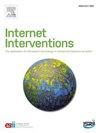Commentary: AI psychosis is not a new threat: Lessons from media-induced delusions
IF 4.1
2区 医学
Q1 HEALTH CARE SCIENCES & SERVICES
Internet Interventions-The Application of Information Technology in Mental and Behavioural Health
Pub Date : 2025-10-13
DOI:10.1016/j.invent.2025.100882
引用次数: 0
Abstract
Background
Reports of artificial intelligence (AI) chatbots fueling delusions in vulnerable users have popularized the notion of “AI psychosis”. We argue the risk is not unprecedented. Individuals with psychosis have long incorporated books, films, music, and emerging technologies into their delusional thinking.
Methods
We review historical parallels, summarize why large language models (LLMs) may reinforce psychotic thinking via sycophancy (excessive agreement or flattery to avoid confrontation), and provide two vignettes contrasting unsafe and safe responses.
Results
Contemporary LLMs often avoid confrontation and may collude with delusions, contrary to clinical best practice.
Conclusion
The phenomenon is not new in principle, but interactivity potentially changes the risk profile. Clinically aware LLMs that detect and gently redirect early psychotic ideation, while encouraging professional help seeking, could reduce harm. Design should be guided by therapeutic principles and evidence about current model failures.
评论:人工智能精神病不是一个新的威胁:来自媒体诱导妄想的教训
人工智能(AI)聊天机器人助长弱势用户妄想的报道使“人工智能精神病”的概念得到普及。我们认为,这种风险并非史无前例。精神病患者长期以来一直将书籍、电影、音乐和新兴技术纳入他们的妄想思维中。方法回顾历史对比,总结为什么大型语言模型(llm)可能通过阿谀奉承(过度同意或奉承以避免对抗)强化精神病思维,并提供两个对比不安全和安全反应的小片段。结果当代法学硕士往往避免对抗,并可能与妄想相勾结,与临床最佳实践相反。结论该现象在原则上并不新鲜,但互动性可能改变风险状况。临床意识清醒的法学硕士在鼓励寻求专业帮助的同时,发现并轻轻地引导早期精神病观念,可以减少伤害。设计应以治疗原则和当前模型失败的证据为指导。
本文章由计算机程序翻译,如有差异,请以英文原文为准。
求助全文
约1分钟内获得全文
求助全文
来源期刊

Internet Interventions-The Application of Information Technology in Mental and Behavioural Health
Medicine-Health Informatics
CiteScore
6.50
自引率
9.30%
发文量
94
审稿时长
6 weeks
期刊介绍:
Official Journal of the European Society for Research on Internet Interventions (ESRII) and the International Society for Research on Internet Interventions (ISRII).
The aim of Internet Interventions is to publish scientific, peer-reviewed, high-impact research on Internet interventions and related areas.
Internet Interventions welcomes papers on the following subjects:
• Intervention studies targeting the promotion of mental health and featuring the Internet and/or technologies using the Internet as an underlying technology, e.g. computers, smartphone devices, tablets, sensors
• Implementation and dissemination of Internet interventions
• Integration of Internet interventions into existing systems of care
• Descriptions of development and deployment infrastructures
• Internet intervention methodology and theory papers
• Internet-based epidemiology
• Descriptions of new Internet-based technologies and experiments with clinical applications
• Economics of internet interventions (cost-effectiveness)
• Health care policy and Internet interventions
• The role of culture in Internet intervention
• Internet psychometrics
• Ethical issues pertaining to Internet interventions and measurements
• Human-computer interaction and usability research with clinical implications
• Systematic reviews and meta-analysis on Internet interventions
 求助内容:
求助内容: 应助结果提醒方式:
应助结果提醒方式:


